Heartworm in cats is caused by the worm Dirofilaria immitis. This worm is mainly found in the Mediterranean region. Recently, heartworms have been diagnosed in cats. Researchers even assume that it is more common than currently thought, but the diagnosis is not always made.
How Does My Cat Get Heartworm?
As already mentioned, heartworm is mainly found in the Mediterranean region. It is transmitted by biting mosquitoes. Researchers believe that the mosquitoes can also survive in the Netherlands due to the changing climate. Not every mosquito can transmit heartworms. The larvae are transferred from one animal to another when the mosquito bites and sucks blood. Fortunately, the cat is significantly less prone to infection than the dog. As soon as the mosquito sucks blood from a "new" animal, the larvae can get into the blood via the mosquito's saliva. The larvae don't always mature inside the cat's body, so not every cat suffers from heartworm. A small percentage of cats can develop symptoms and there are even cats who die from heartworm. Complaints in cats as a result of heartworm disease have become increasingly common in recent years. Fortunately, heartworm infection is very rare in the Netherlands. Most cats become infected after a trip to southern Europe.
How Do I Identify Heartworm in Cats?
After your cat is bitten by the mosquito and the larvae are in the bloodstream, the larvae travel to your cat's heart. Here the larvae remain for about 4–6 months until they reach adulthood. The adult heartworm multiplies in the pulmonary artery. For this it is necessary that both a male and a female worm are present. This chance is very small as most cats only have 2-4 worms. After two years, a worm can die of old age.
Cats can also heal spontaneously after an infection without showing any symptoms. Some cats develop lung problems because the worms reside in the heart and pulmonary artery. Cats may cough (or even cough up blood) and become short of breath. Other problems that can arise are not very non-specific and involve multiple diseases; Loss of appetite, lethargy, weight loss, rapid heartbeat, diarrhea and vomiting.
How is heartworm in cats diagnosed?
The diagnosis can be made with a blood test. This blood test is currently only available for young worms and will therefore be negative when the worms are older. There are extensive blood tests that make the diagnosis clearer, but the best advice is an ultrasound. This ultrasound must be performed by a specialist. Since cats only have 2-4 worms, the diagnosis can easily be missed.
How is heartworm in cats treated?
There are medications that are sufficient to kill heartworm in a single dose. Dogs are more likely to have higher levels of worms in their bodies, making this therapy dangerous to use. If the worms in dogs die all at once, constipation can occur. Therefore, never pass on the medication that you receive for your cat to your dog without consulting it!
Can I prevent heartworm in my cat?
Fortunately, preventing heartworm in your cat is relatively easy. If you are planning to travel to the south of Europe, it is advisable to do some research beforehand, for example from your veterinarian. Take preventive measures, especially in the period from April to November. It's best to leave your cat at home. There are also some dewormers that can help prevent heartworm.
The countries that you should pay special attention to are: Greece, Turkey, Czech Republic, Slovenia, Romania and Bulgaria. In general, southern and eastern Europe are considered risk areas. The Canary Islands are also among the risk areas. If you plan to travel to these countries with your cat, be sure to treat your cat with an anti-wormer medication that is effective against heartworm (these include ivermectin, milbemycin oxime, moxidectin, or selamectin). The preventive measures consist in starting treatment 30 days after arrival at the destination. You must repeat this treatment monthly, up to 30 days after your return to the Netherlands. If in doubt, always consult your veterinarian!
This text was translated by a translation machine
 Horse Pharmacy
Horse Pharmacy Rugs
Rugs Care
Care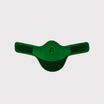 Saddle and Attachments
Saddle and Attachments Leg Protection
Leg Protection Bridles
Bridles Feed
Feed Fly Masks
Fly Masks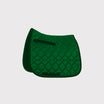 Saddle Pads
Saddle Pads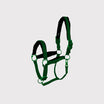 Headcollars and Ropes
Headcollars and Ropes Bits
Bits Other Disciplines
Other Disciplines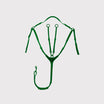 Reins and Auxiliary Reins
Reins and Auxiliary Reins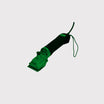 Clipping
Clipping Western
Western Eventing
Eventing Foals
Foals Reflection
Reflection Therapy Products
Therapy Products Boots and Shoes
Boots and Shoes Breeches and Belts
Breeches and Belts Tops
Tops Safety
Safety Competition
Competition Heated Clothing
Heated Clothing Gloves
Gloves Socks
Socks Spurs and Attachments
Spurs and Attachments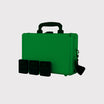 Technology
Technology Whips
Whips Gifts
Gifts Casual Wear
Casual Wear Underwear
Underwear Rider Pharmacy
Rider Pharmacy Bags
Bags Books
Books Laundry supplies
Laundry supplies Jewelry
Jewelry Feed and Waterbowls
Feed and Waterbowls Equipment
Equipment Tack Room
Tack Room Pest Control
Pest Control Arena
Arena Horse Toys
Horse Toys Wheelbarrows
Wheelbarrows Yard
Yard Surveillance
Surveillance Disinfect
Disinfect Washing Area
Washing Area Lighting
Lighting Horse Pasture
Horse Pasture Current Conductors
Current Conductors Pole
Pole Insulators
Insulators Energisers
Energisers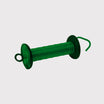 Gate Handles
Gate Handles Batteries and Accumulator
Batteries and Accumulator Nets
Nets Grounding
Grounding Tools
Tools Fencing Security
Fencing Security Wolf Defense
Wolf Defense Fencing Sets
Fencing Sets Fence locks
Fence locks Dogs
Dogs Cats
Cats Rodents
Rodents Dogs Pharmacy
Dogs Pharmacy Cats Pharmacy
Cats Pharmacy Rodents Pharmacy
Rodents Pharmacy Cattle Pharmacy
Cattle Pharmacy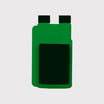 Poultry Pharmacy
Poultry Pharmacy Veterinary Supplies
Veterinary Supplies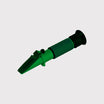 Cattle
Cattle Sheep and Goats
Sheep and Goats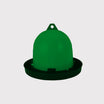 Poultry
Poultry Heat Lamps
Heat Lamps Calves
Calves Marking
Marking Halters
Halters